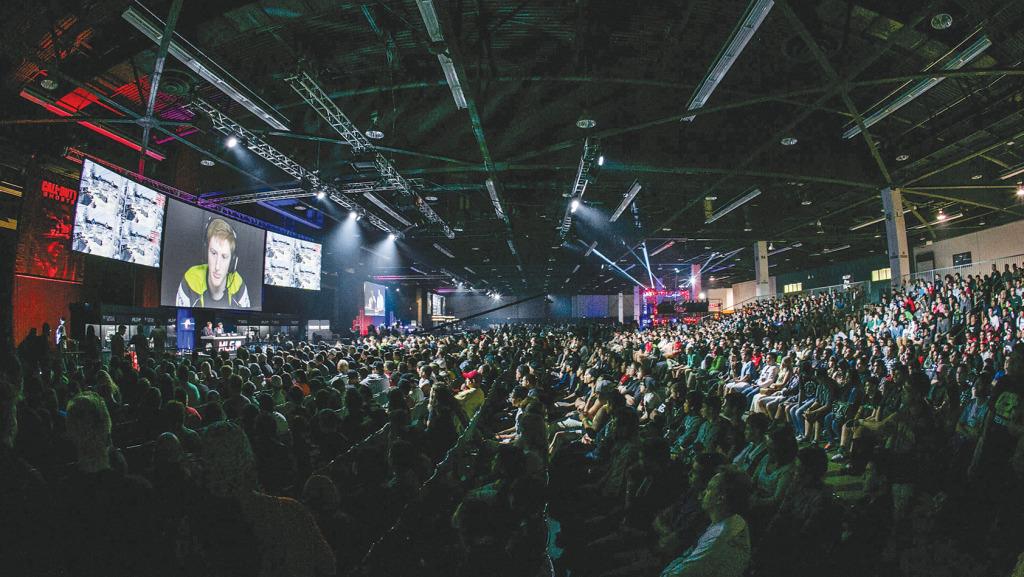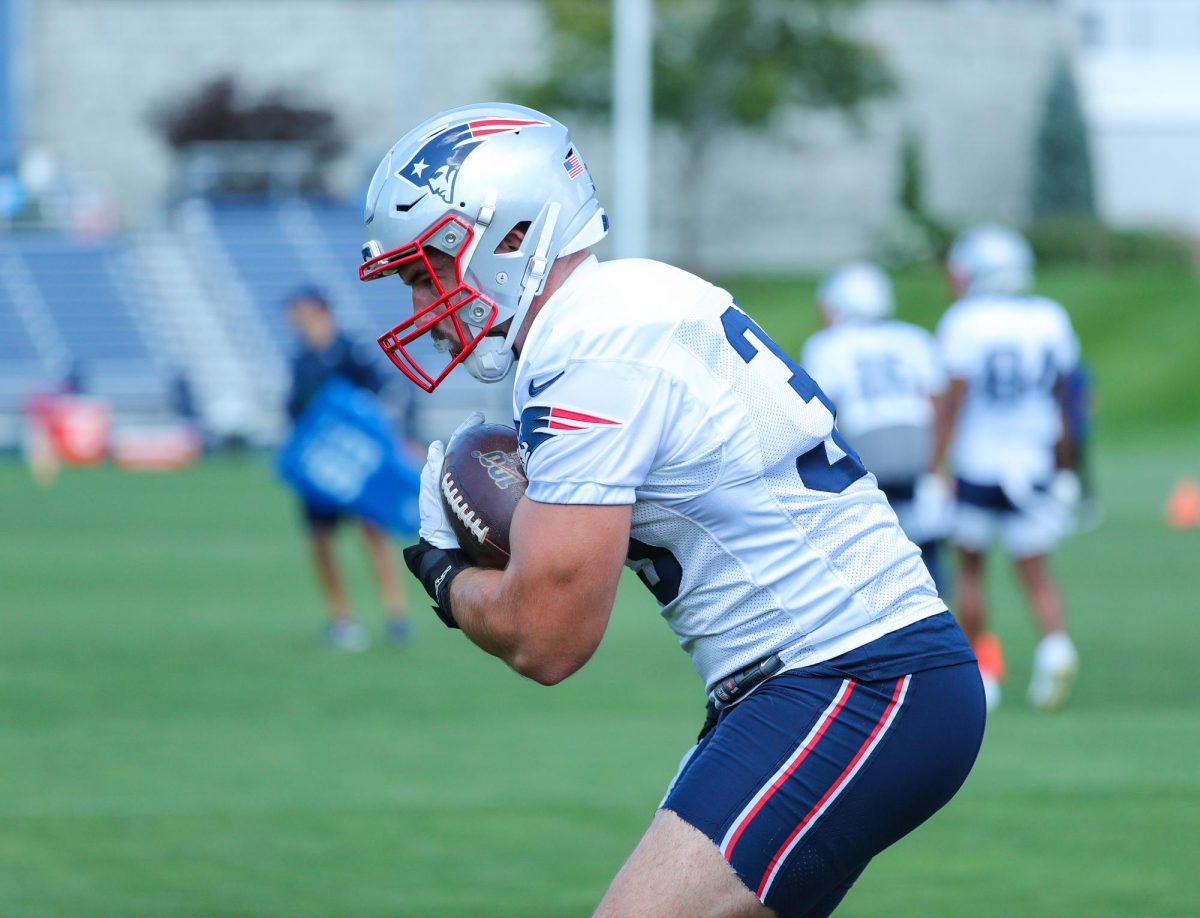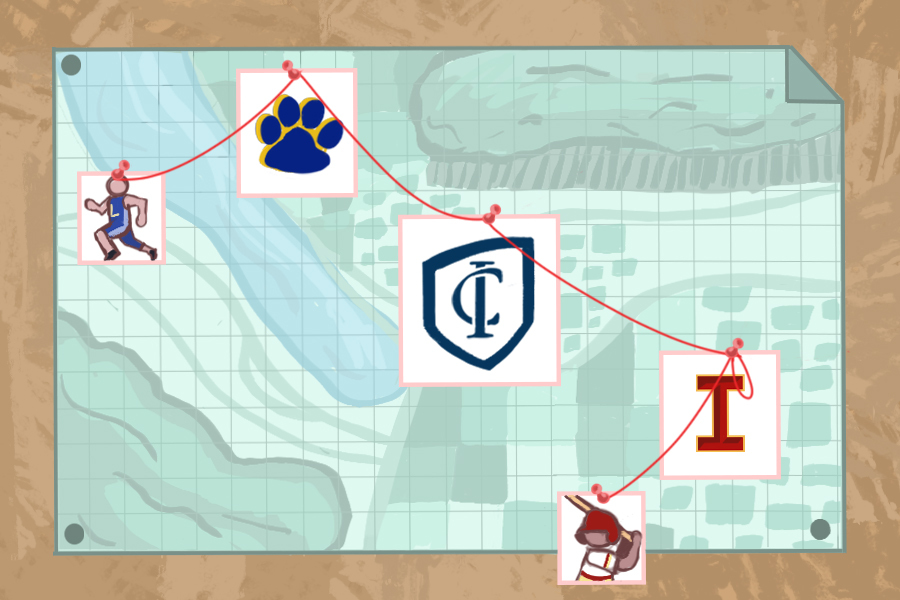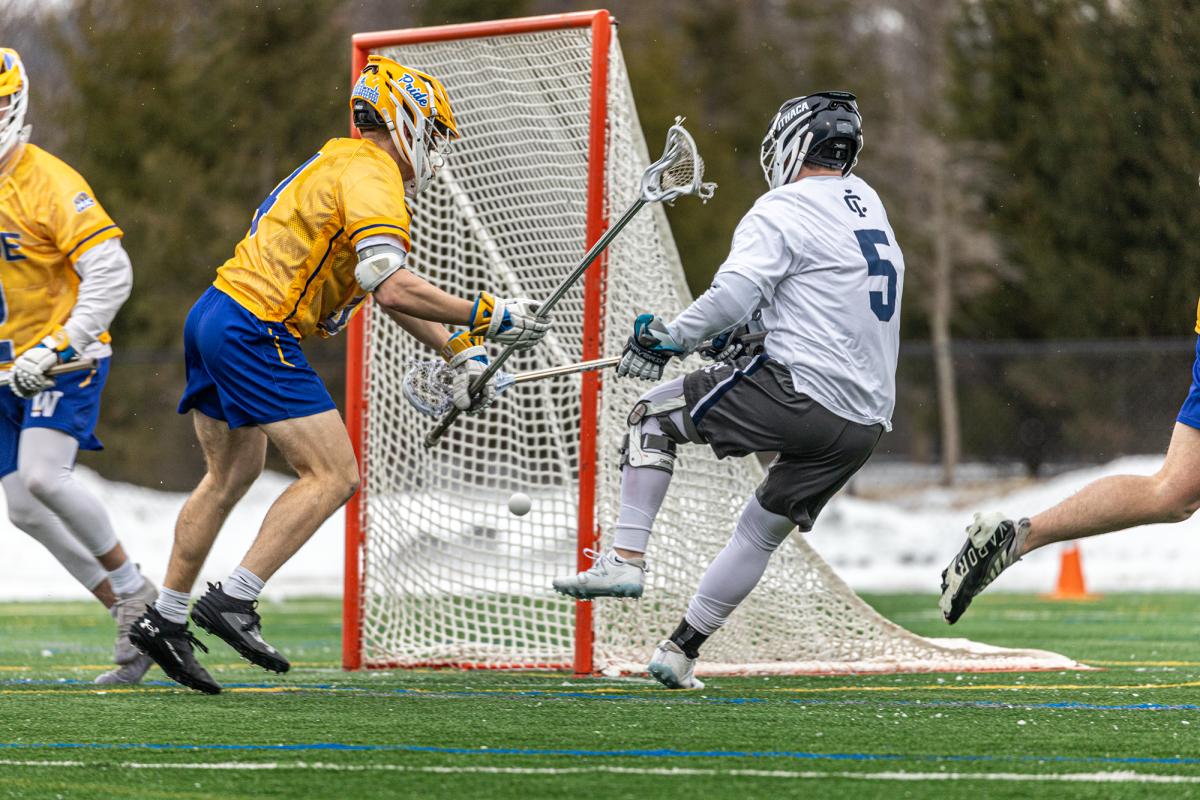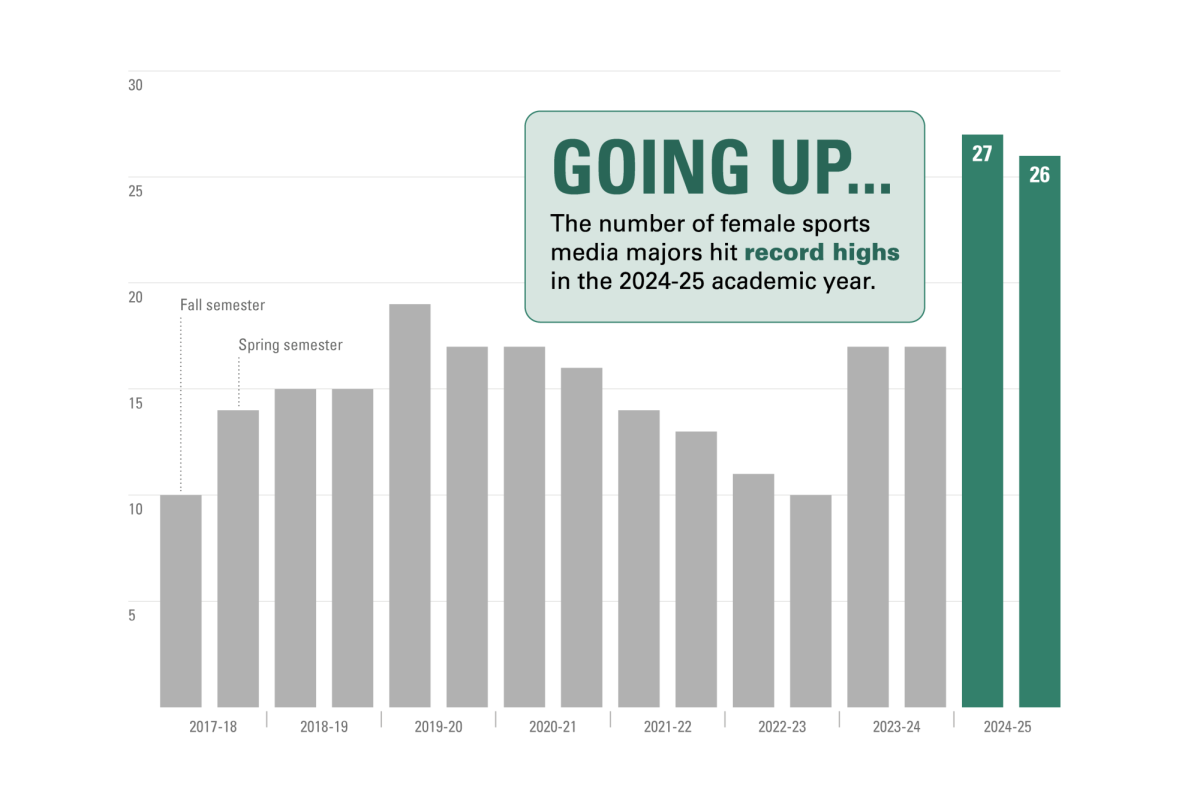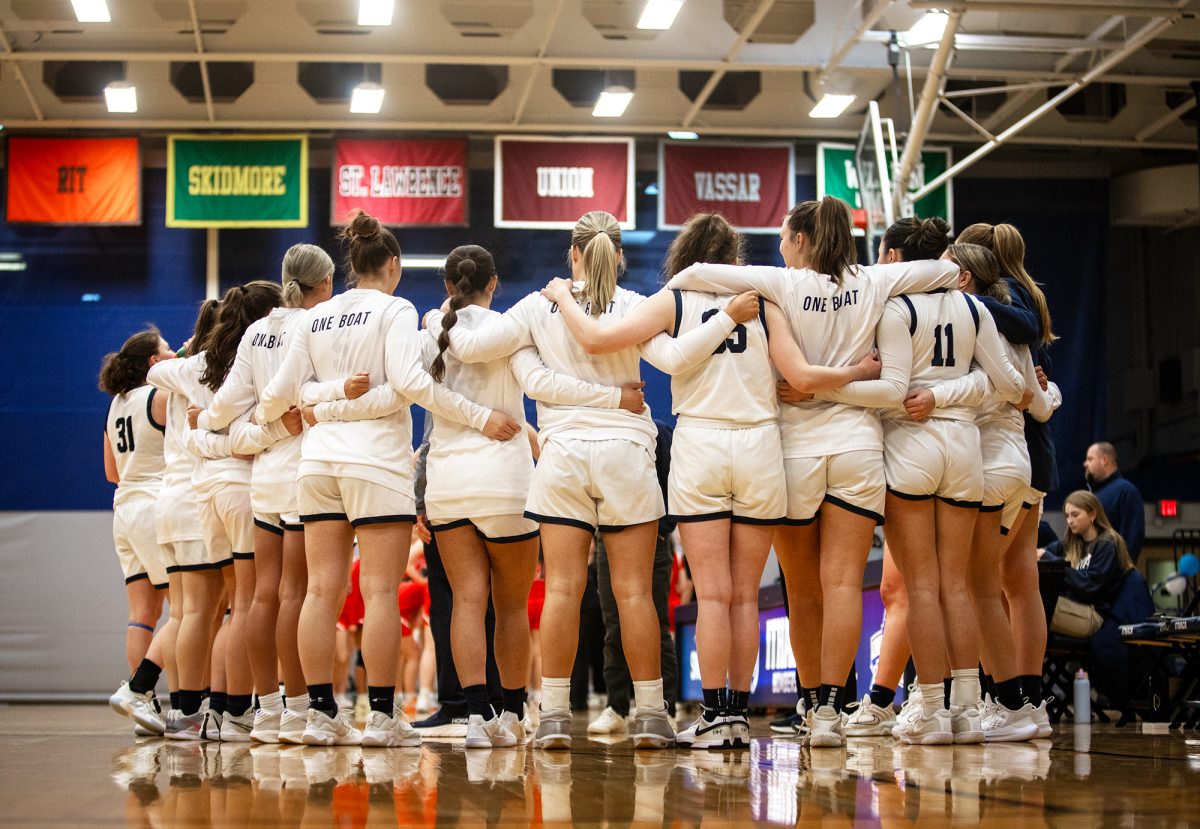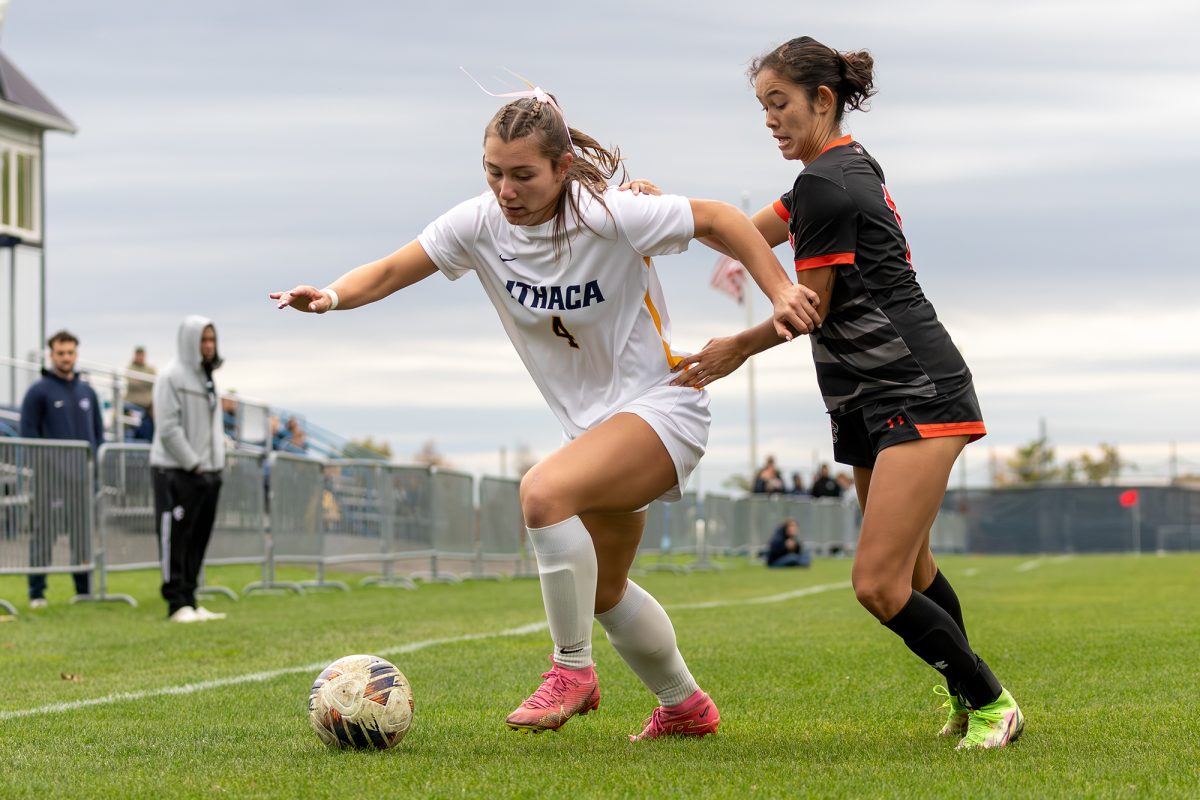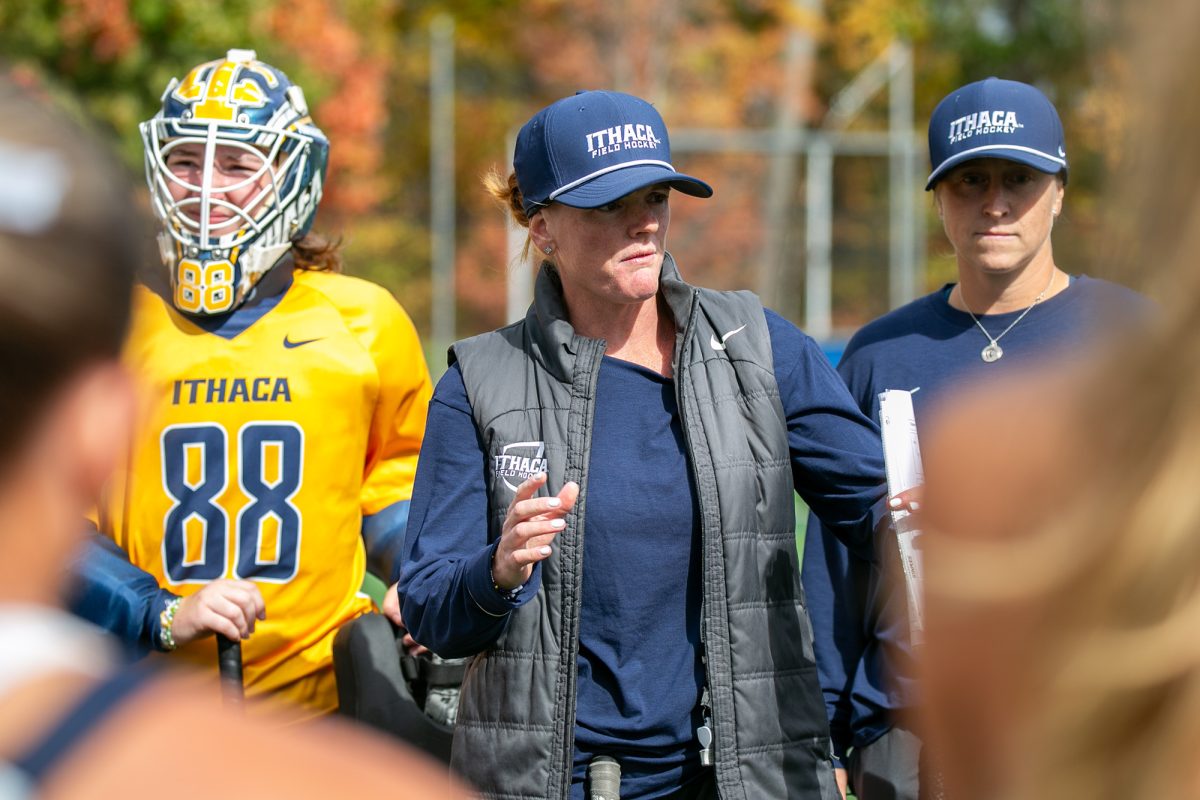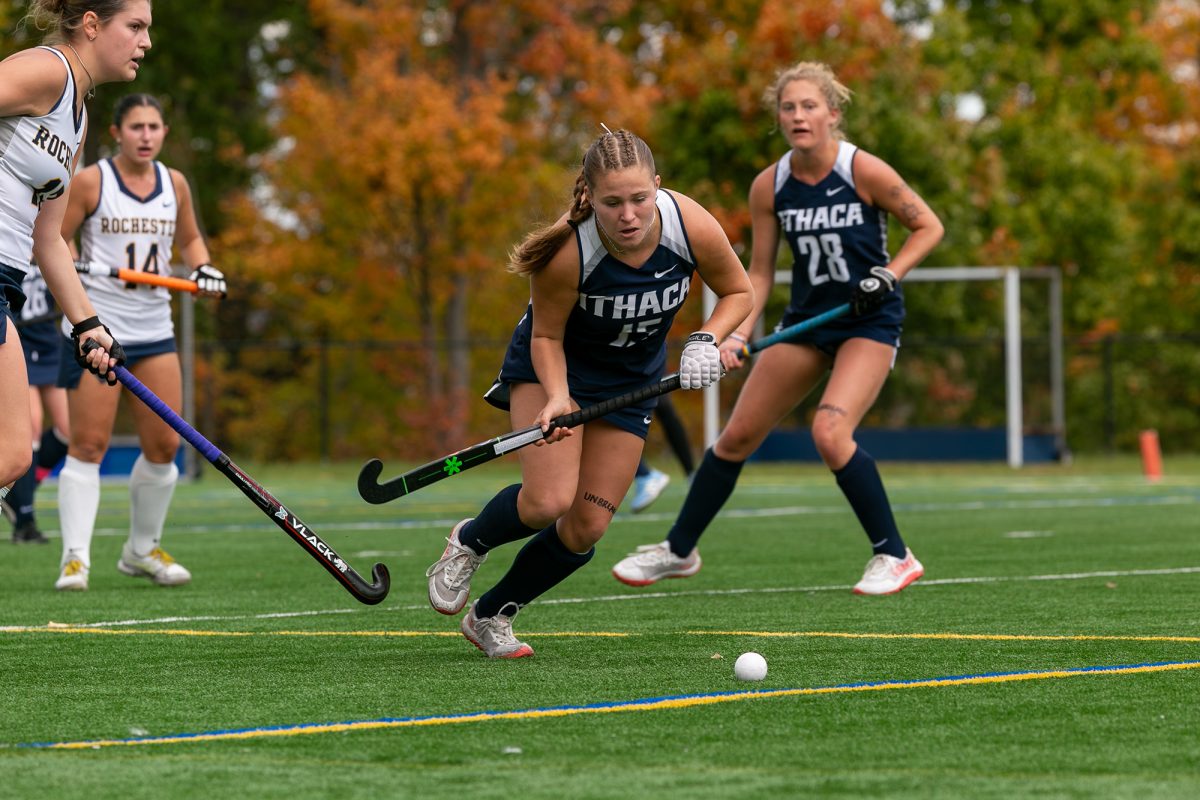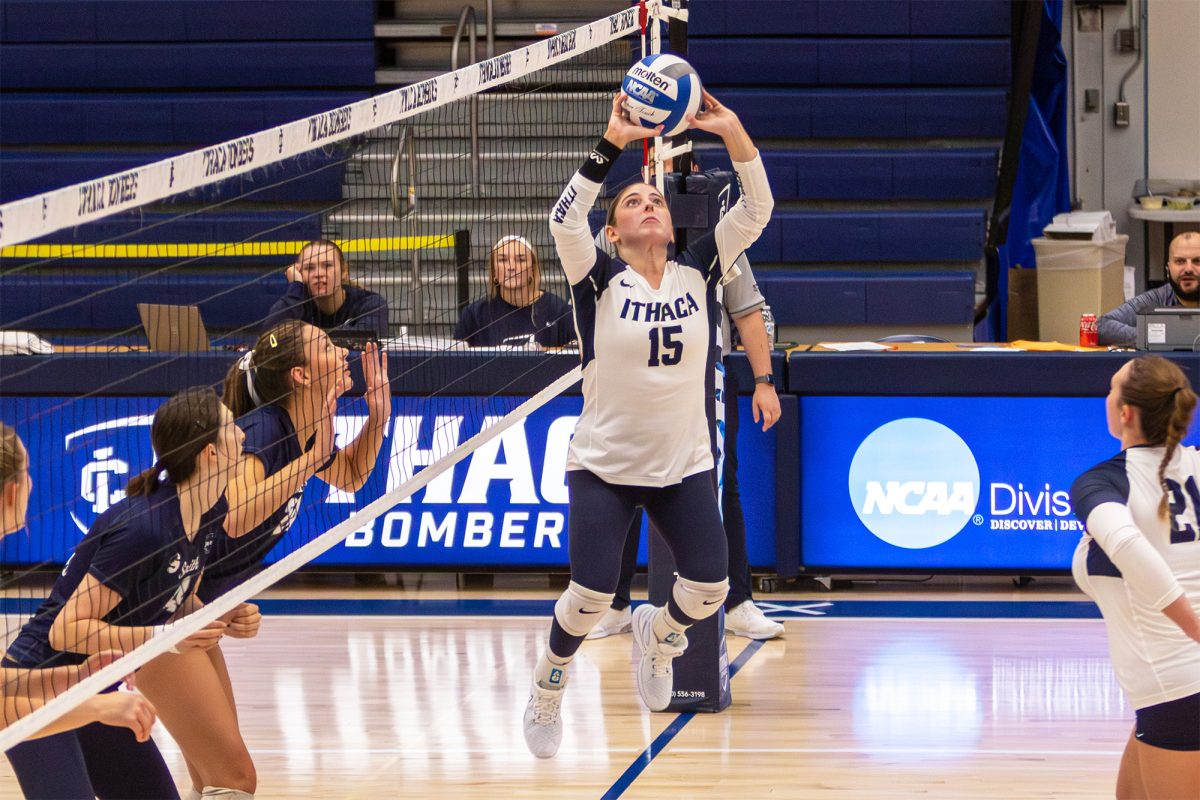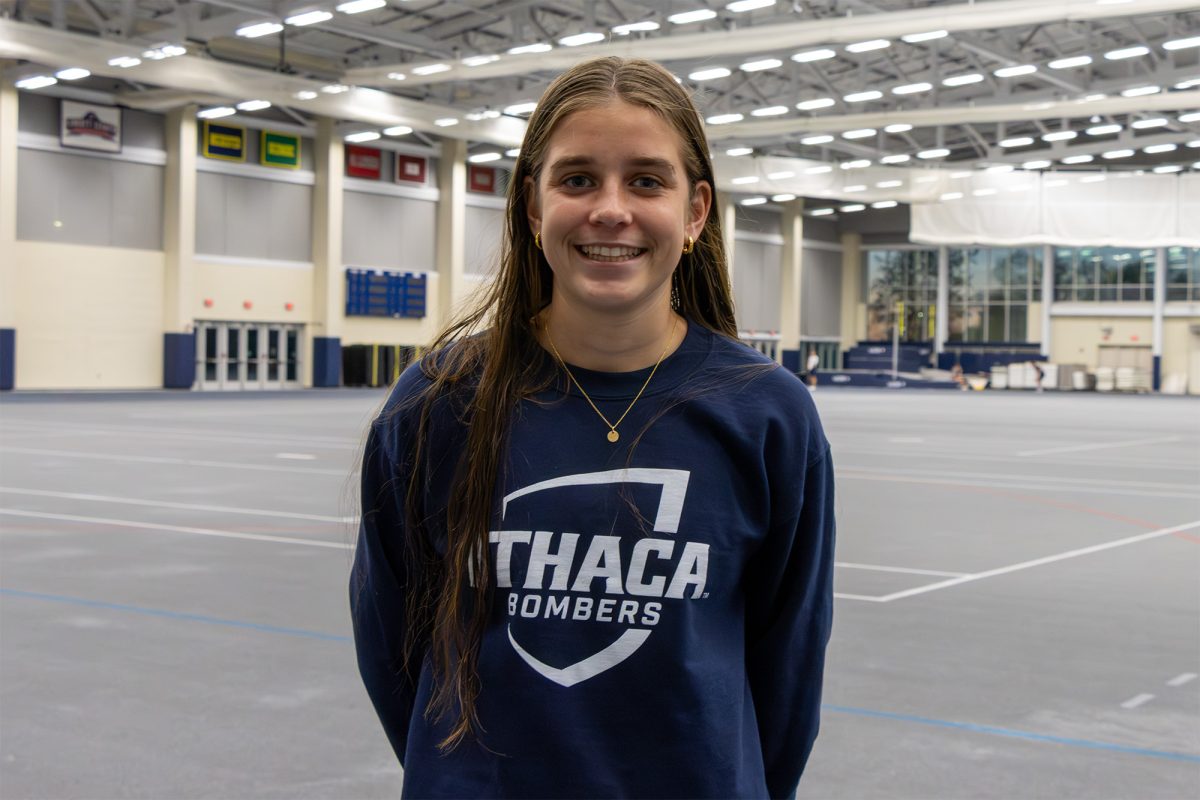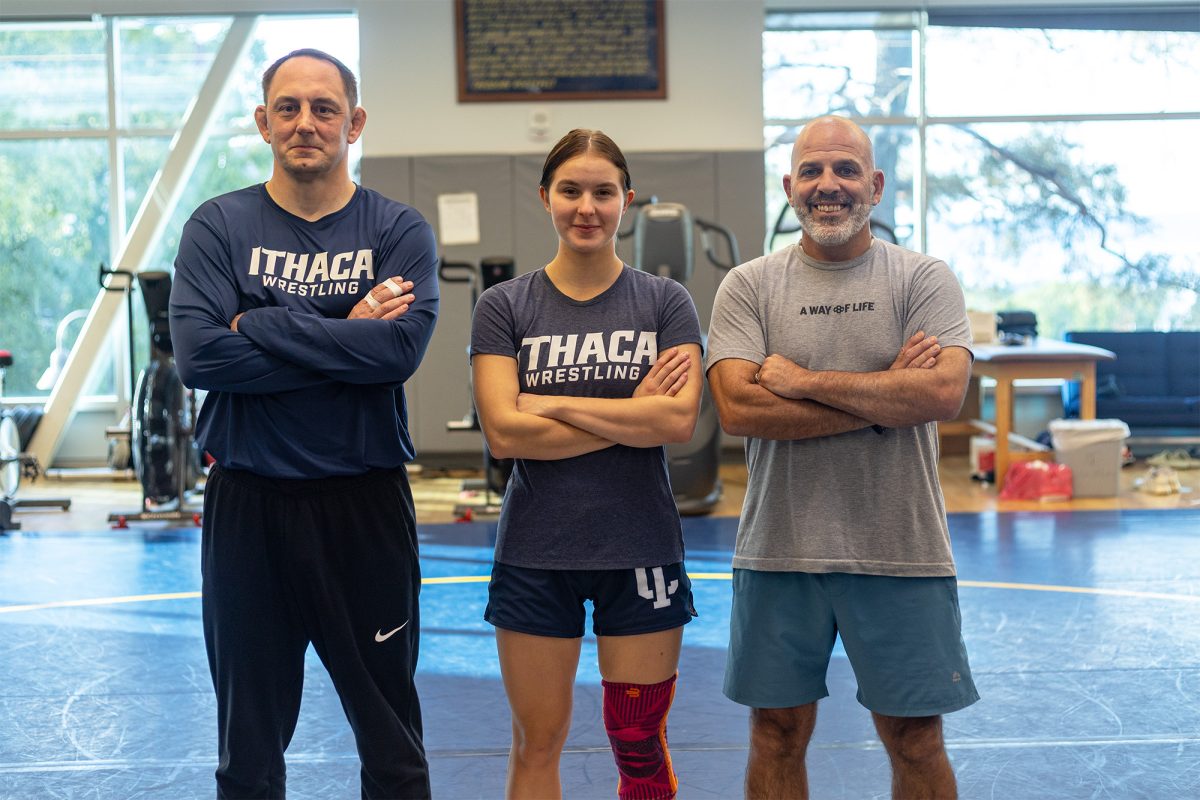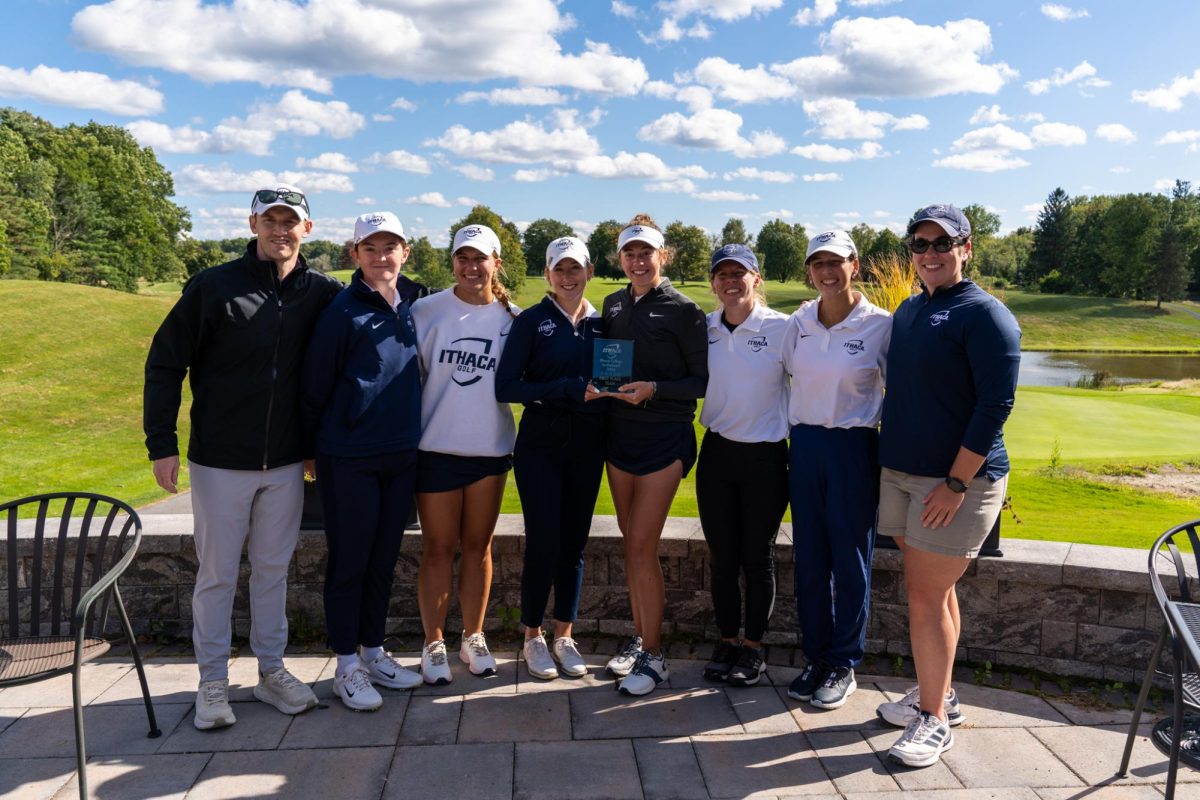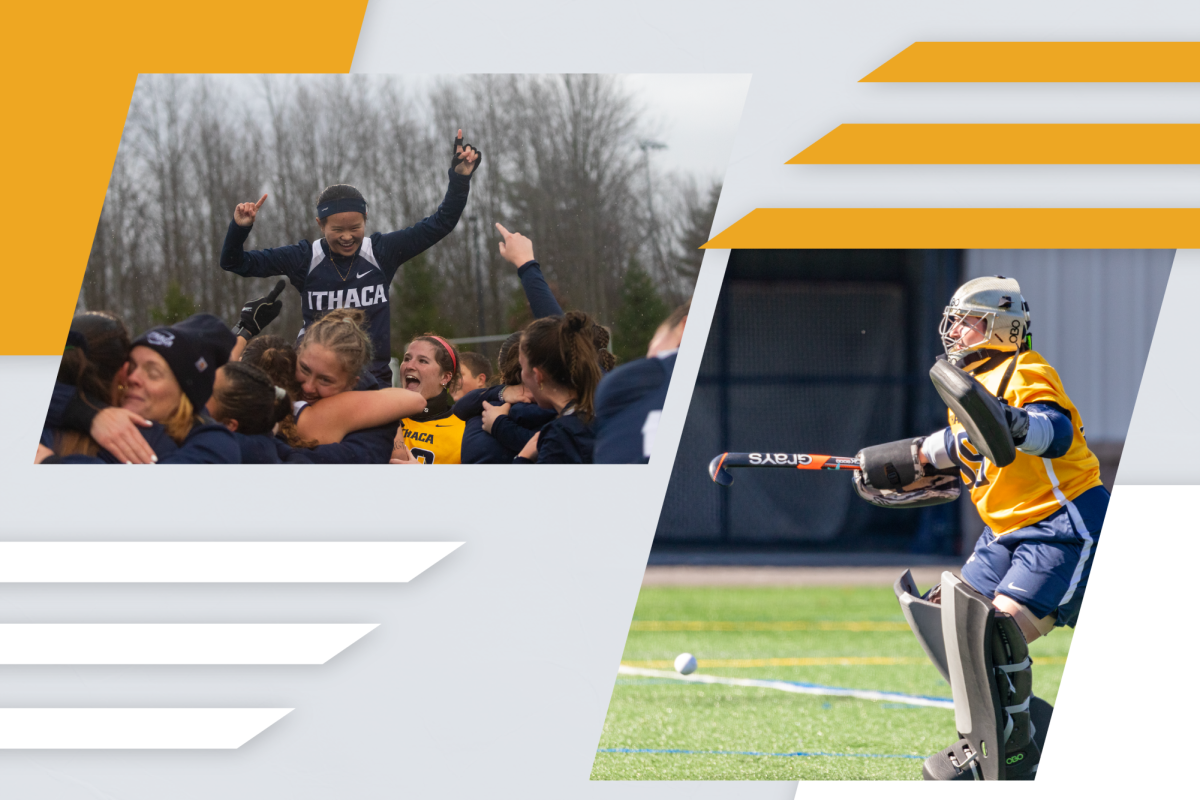Ithaca College and the University of Pittsburgh have battled their way through the Round of 16 and are now matched against each other for the quarterfinals. Whoever wins in a set of three gets to move on, one step closer to being the winners of the 2014 Northeastern League Alliance Invitational. The first 12 minutes put the teams on even ground. They’ve both stacked four points, and the game is quiet. However, within the next five minutes both teams have amp up the aggression. The plays are suddenly more explosive and daring, as they push themselves further to seal more points. By the 17th minute, Pittsburgh begins running pack-style, charging its way through the undefended middle and bottom half of the field, taking advantage of the college’s weak spots. Pittsburgh gains a six-point lead, and the momentum gives the team the confidence to take it all. The Ithaca College team’s nexus is destroyed in a flash of light, and a winged “Victory” sign pops up on the screen for the Pittsburgh team.
This was not a traditional sporting event but the final match between the college’s Team Tryhard Two and the University of Pittsburgh’s Pumpkin Spice in the quarterfinals of the 2014 NELA Invitational. According to its website, NELA exists as an outlet for collegiate esport competition involving the game “League of Legends,” one of the world’s largest and most popular esports today.
Esports are video games that pit either individuals or groups against each other in a competition. “League of Legends” is a multiplayer online battle arena game, where players choose from a variety of fantasy-style characters and, in the classic Summonor’s Rift mode, battle in a five-vs.-five match to try and destroy the opposing team’s “nexus.” Average play time is about 20–45 minutes per game, and in that time players dance their characters around the environment, getting into battles on various scales, placing vision wards to trace the enemies’ movements, attacking non-playable characters for bonus experience and executing strategies in the hopes of inevitably overpowering the other team.
While this may seem like a childish pastime to some, esports have been growing in popularity, gaining media and societal attention in the professional sports world.
The college has its own outlet for esports in the form of the Ithaca College League of Legends Club, which was founded in Spring 2014 and comprises about 64 members.
“We realized that, yes, there was a gamer’s club on campus … but there wasn’t really any sort of esports orientation toward things,” Dan Ruthman, president of IC LOL, said. “So we said, ‘OK, well, a lot of us play “League of Legends.” We know a lot of people on campus play “League of Legends,” so why not make a club for it?’”
While it’s hard to pinpoint what has been causing the increase in esport participation, or more prominently the increase in people showing interest in spectating esports, some believe developing technology and increased Internet usage play a role in it.
Evolving Technology
Duncan Shields has been following esports since the late ’90s, going by the pseudonym Thorin. After studying computing in college, he made his first active step into the esports world when he coded and developed his own website for esports. He now serves as a journalist in the field, having worked for websites like SK Gaming, Team Acer and OnGamers.
Shields said in the early 2000s, the esport game “Counter-Strike” would draw in about 40,000 spectators to watch online tournaments but that the in-game feeds would suffer problems, such as slowness and freezing, that would affect the enjoyability.
“I think if you could have had these [modern] technologies in place back then, if everyone had had faster Internet and we’d had these tools created, I think some of the early games would have been quite big,” Shields said. “Maybe not quite as big as they are now, but they’d have been staggeringly big where people would have had to take notice.”
In an Ithaca College residence hall room, a student sits perched on the edge of her seat. She leans forward intently to observe the tail-end of a live match happening online, hoping to support her fellow “League of Legends” players. Although she lives in a single, junior Rae Enlow is not alone. Other students from both Ithaca College and the University of Pittsburgh are tuning in to the site to see what happens next between Team Tryhard Two and Pumpkin Spice, allowing them to cheer on their schools without having to leave their rooms. This is a Twitch stream, a live video footage feed hosted by www.twitch.tv.
Twitch is an online broadcasting website with an emphasis on being a place for individual gamers, professional players, media outlets, conventions and large-scale esports events to live stream their games and potentially provide commentary while playing.
On its website, Twitch states it has more than 60 million site visitors per month. In February 2014, the Wall Street Journal published the top 10 companies with the highest percentage of peak U.S. Internet traffic. According to that data, Twitch held 1.8 percent of Internet traffic, ranking fourth and placing above other popular websites like Facebook and Amazon. Because of its high traffic, Amazon purchased Twitch Interactive, Inc., in August of this year for $970 million.
Twitch.tv isn’t the only popular website gamers go to for watching professional and amateur esports. Founded in 2002, Major League Gaming began as a site composed of video game tournament leagues. However, Katie Goldberg, MLG’s senior vice president of communications, said the site has recently branched out into the streaming world.
“The founders were fans of both traditional sport and video games and decided to model MLG after some of the most successful leagues in the world,” Goldberg said via email. “Since the company’s inception, the mission has always been to promote esports globally through premier competition both online and in person.”
Goldberg said MLG created its own streaming site, MLG.tv, in 2013, which she said has led to major growth in terms of competitors and viewers on the site. While the majority of Twitch users are interested in fantasy esports, MLG’s audience is geared more toward esports like the “Call of Duty” series, the “EA Sports” series and the “2K” series. Goldberg said the company reaches about 20 million people each month across the MLG network, and 9 million are registered users in its online gaming tournament system. Streaming websites like MLG and Twitch have the secondhand benefit of letting viewers give a face to a username, which Timothy Kimbirk said helps fans to create an attachment to the game and to want to watch people play it.
Kimbirk is a writer for solomid.net, a branch of professional “League of Legends” Team SoloMid’s online network, for both game guides and coverage of professional “League of Legends.” At solomid.net, Kimbirk provides in-depth analysis and reporting on the game and conducts player interviews. He said the trend for professionals to create live-stream accounts has helped garner interest in esports overall.
“These personalities are grown online on streaming sites and things like that,” Kimbirk said. “There’s this culture that is growing where, because you can be known online or known through your stream, you get into the game on a competitive side, you can actually have a fanbase and since these fan bases exist, these games can exist as competitions.”
Ruthman said he believes watching games also provides an outlet for those who have just begun playing or who may not want to spend money on a new game when they can first preview it via a live stream.
“More and more people are saying ‘If I’m not good at a game’ or ‘If I can’t afford a game, I’ll just watch someone play it,’” Ruthman said. “That started to make the vast market of gamers say ‘OK, we’re going to watch people play.’ So then esports took it as ‘OK, if some people are going to watch us play, we should make money off it.’”
Similarly, esportsearnings.com has kept an online record of how much money has been funneled to players through several esports games and tournaments. According to its rankings, the game “Dota 2” has topped the charts, having given out nearly $23 million in prize money over the course of 262 tournaments.
It’s these million-strong fan bases and high-potential earnings that have worked together to bring a serious question to the forefront: Are esports comparable to traditional sports?
Esport vs. Traditional Sport
Neil Hammad, better known by his “League of Legends” name pr0lly, is a 25-year-old professional “League of Legends” player. He said it’s hard to get people to take professional gaming seriously in North America because of how video games have been thought of in the past.
“It’s not necessarily looked down upon, but it’s still not taken seriously,” Hammad said. “For so many years … games have literally been just a pastime … that becoming something serious is going to take some time for people to understand that it can be that because even when I do it professionally right now, my parents still view it as a game before a job.”
John Skipper, president of Entertainment and Sports Programming Network, said, while he was attending the Code/Media Series: New York conference on Sept. 4, esports are not real sports, but that they are more of a competition like chess or checkers. Although Skipper denied esports’ validation, ESPN3, ESPN’s online streaming website, streamed live footage of the League of Legends World Championship Final on Oct. 19.
Junior Zane Scott is a sprinter on the college’s men’s track and field team. Scott said he did three sports in high school: indoor track, outdoor track and football. To Scott, in order to qualify as a sport, the activity must have some sort of athletic component and a definitive outcome. To him, players show physical prowess, along with traits like strength, agility and dedication. Given these criteria, Scott said, he does not think esports can be considered a sport in the same way traditional sports can be.
“I just feel that the athletic component is a huge part of it,” Scott said. “I think it’s even like saying chess is a sport. There’s just not that athletic physical component to it. I feel like that’s pretty major.”
Sophomore Nick Gallaro, the competitive team organizer for IC LOL, said professional esports players need to have dedication, especially when it comes to putting in practice time. Hammad recounted his own experiences with regular team practices and tournament practice, which he referred to as boot camp. He said training would consist of things like in-game strategy planning, team communication and trying out different team compositions in an effort to get consistently stable play.
“It’s more intense than normal weeks because I’d say, on average, you probably play as a team 5–6 hours a day,” Hammad said. “But during boot camp, you spend closer to 10 hours a day maybe. So that’d be your schedule two weeks before an event or three weeks before an event, 8–10 hours again.”
Cornell University senior Ambrielle Army is an esports Web content coordinator for Riot Games, the gaming company that owns “League of Legends.” She was also a writer for Team Dignitas, Ltd. Army said through her coverage of the League of Legends Championship Series, she’s frequently interacted with professional players and has agreed that about 8–10 hours a day go into practice.
“On top of that, there will be time set aside to watch replays of old games to learn from mistakes, watch replays from other teams to find their weak and strong spots, and sometimes even sleeping,” Army said via email.
Scott said the men’s track team’s regular practice schedule is 4–6 p.m. Monday through Friday, with extra lifting workouts three days a week. For meets, Scott said the team has meet prep on Fridays where they work on box starts and perform light jogging.
Outside of the players, the esports world has other parallels to recognized sports. Kimbirk said his reporting style mirrors that of what he would do if he were covering traditional sports, leading him to cover topics like what is the matchup between two teams, what are their current records and how are players doing compared to previous games.
“I just look at it as writing for sports, and I approach it the exact same way as I would with any sports,” Kimbirk said. “I ask the exact same questions that I hear in sports interviews all the time.”
Professional Competitions
It’s Oct. 19. Bodies swarm the field of the Sangam Stadium in South Korea. The grass that once saw the 2002 FIFA World Cup has now been temporarily covered to make room for floor seats and a giant TV monitor. Fans anxiously watch on as the fourth match between team Samsung White and team Star Horn Royal Club heats up. With every surprise group-on-group attack, the crowd roars with excitement, screaming the name of their favorite teams. They’re decked out in jerseys and costumes, and they carry giant signs with inspirational or funny things that they hope their star players will see. With a final push, it’s Samsung White with the win at the 2014 League of Legends Championships. The stage explodes in a mass of pyrotechnics as the winners take to the forefront to accept the Summoner’s Cup and the $1 million in prize money. But for the fans, it’s not just about trophies and bragging rights.
“They like knowing that there’s a big crowd comradery, that they’re in the crowd,” Shields said. “Because obviously most people — … it’s a niche, they don’t really like esports or they don’t know about it. So I think that’s what gets people even more hyped up.”
Like traditional sporting events, live esports events have the power to draw massive crowds and generate the similar levels of excitement. Professional commentators, or “casters,” as they’re called in the esports realm, give play-by-play overviews of the game as it’s happening, and instant replays are commonly shown for a particularly skillful, complex or entertaining move. Army said she believes esports fans are very energetic and everyone should go to a live esports event if they have the opportunity.
“You’ll see one of the most excited and passionate crowds of any competition,” Army said. “One of my favorite pro games of all time has to be the TSM vs. [Counter Logic Gaming] game from MLG Anaheim. Aside from being one of the closest games, standing in a crowd among thousands of people chanting the name of their favorite team as the seconds ticked down made it unforgettable.”
Esports are also beginning to break onto college campuses in a more serious form than extracurricular clubs. Robert Morris University Illinois, an NCAA Division I school, has added a competitive “League of Legends” team to its varsity sports roster, and has given out the first scholarship for collegiate esports.
Ruthman said he hopes to get esports to be considered the same way as traditional sports on our college campus, with a varsity team — though he said this would have to be a down-the-line goal. Gallaro said IC LOL originally tried to register as a club sport, but its request was denied by the college’s previous club sports coordinator.
However, Mike Ostman, the current program coordinator for sport club and business management in the Office of Recreational Sports, said he sees the viability of “League of Legends” being a club sport on campus because the last institution he worked at, Gonzaga University, had a club called the Gonzaga University League of Legends Collegiate Program.
“I would be more than willing to help a group start one if they were interested,” Ostman said.
In 2015, Ruthman said about 20 members of IC LOL will be traveling to Boston to attend the Penny Arcade Expo, a gaming convention held in the Boston Convention and Exhibition Center. PAX East and its main branch, known as PAX Prime, represent the two largest gaming events in North America, according to its website. PAX East has a number of esport tournaments on-site, promoting collegiate esport competition. Hammad said having these events at the college level will ultimately help the cause.
“If someone from a collegiate team made it to the LCS, they would give a shoutout to their college, or their college would be brought up in their history,” Hammad said. “I can only assume that kind of thing will spread because college’s are competitive and esports are growing.”
Army said she believes esports will get their due over time once more people outside of the industry realize its popularity and viability as a career option. As far as any specific obstacles to overcome on this path, she said she was unsure.
“I usually have mixed feelings on it,” Army said via email. “Some people consider competitive games sports — sure, it’s right there in the name — while others can’t accept it. In the end, I don’t think it matters too much. What everyone wants to see is the best players in the world fighting it out in a game they love. Are they athletes? Who cares? They’re champions.”


